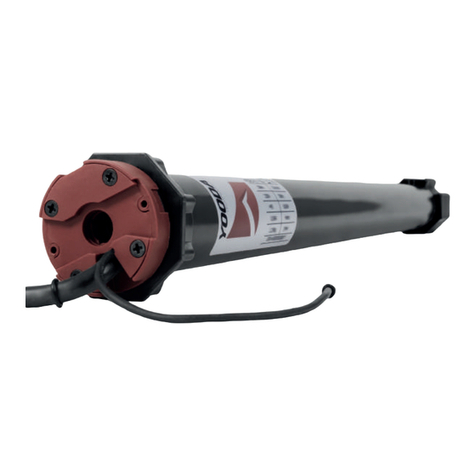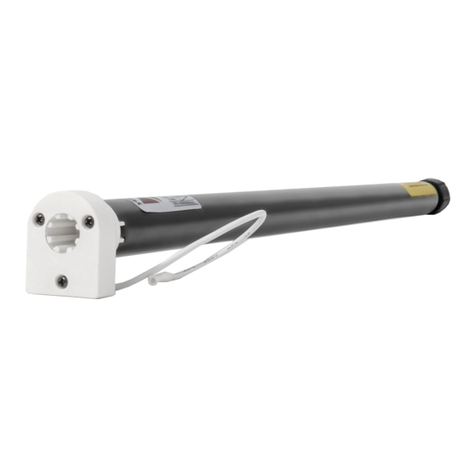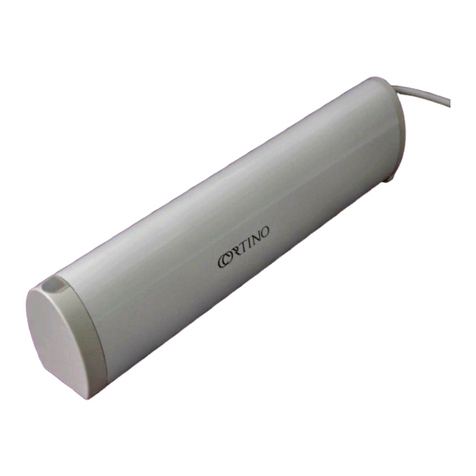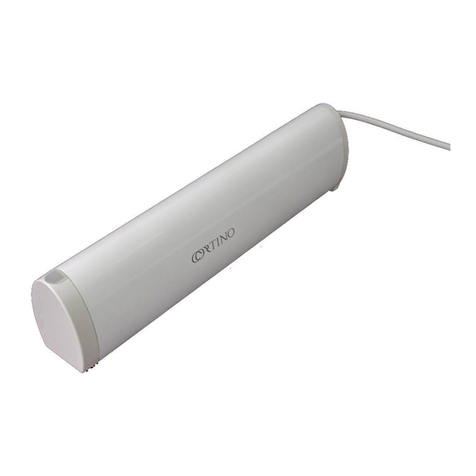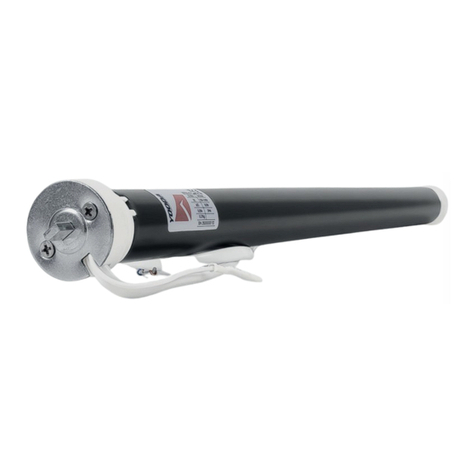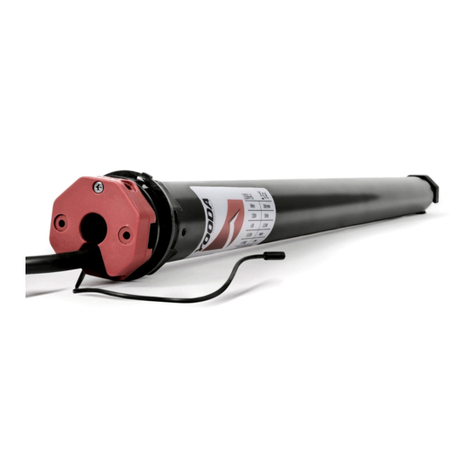
16. Activating impulse mode
17. Choosing a reaction to obstacle detected
18. Choosing obstacle detected operation mode
19. Manual opening function
7
1.Longer than 6 seconds pause between series of button clicks during programming will cause device to switch off from
programming mode without saving any changes.
2. To activate impulse mode follow the procedure below. To deactivate impulse mode repeat this procedure.
3. The pulse function is carried out in such a way that a short pressing of the UP or DOWN button causes the motor to
work in impulse mode and holding the button above 2 seconds will cause the motor to work continuously.
Roller shutters
will make short
up/down movements.
Simultaneously press and hold
DOWN and UP buttons
for 5 seconds .
Press
STOP button.
If the roller shutter makes a
short movement in both
directions and the motor will
make a sound, the impulse
mode is ON.
If the roller shutter makes a
2 short movements in both
directions and the motor will
make a 3 sounds, the
impulse mode is OFF.
Roller shutters
will make short
up/down movements.
Motor will make a sound.
Press programming
button P2.
Press
DOWN button.
Press
DOWN button.
If the motor will perform two short movements
up / down and will make a few sounds, it means
that the reaction 1 is started : when an obstacle
is detected the roller shutter will stop.
If the motor will performn short movement up / down
and will make a sound, it means that the reaction 2 is
started : when an obstacle is detected the roller
shutter will move in the opposite direction.
If the motor performs a short up / down
movement and make a sound, it means that
the drive is in mode 1 : The sensitivity of
obstacle detection is reduced to 20 cm from
the upper and lower limit positions.
If the motor performs two short up / down
movements and make two sounds, it means
that the motor is in mode 2 : The sensitivity
of obstacle detection is reduced to 10 cm
from the upper and lower limit positions.
If the motor performs three short up / down
movements and make three sounds, it
means that the motor is in mode 3: The
sensitivity of obstacle detection is reduced
along the entire height of the roller shutter.
Roller shutters
will make short
up/down movements.
Motor will make a sound.
Roller shutters
will make short
up/down movements.
Motor will make a sound.
Press programming
button P2.
Roller shutters
will make short
up/down movements.
Motor will make a sound.
Roller shutters will
make short up/down
movements.
Motor will make a sound.
If the motor will performn short movement
up / down in both directions
and will make a sound the manual
opening function is ON.
If the motor performs three short up / down
movements in both directions
and make three sounds, the manual
opening function is OFF
Press programming
button P2.
Press
STOP button.
Press
DOWN button.
Press
STOP button.
Press
DOWN button.
Motor will make a sound.
Roller shutters will
make short up/down
movements.
1. When the manual opening function is activated, manually opening or closing the roller shutter in case of power failure
does not change the limit positions of the motor.
2. When the manual opening function is deactivated, do not use head of the emergency opening as this will change the
programmed limit positions of the motor.
3. Do not use the emergency opening outside the range of the set limit positions.
4. By default, the manual opening function is enabled.
5. Use the emergency opening only when there is no power supply. An hexagonal pivot with a dimension of 7 mm is used
for the emergency opening mechanism. To open or close the gate using the head of emergency opening, place the crank
in the emergency opening. Rotate the crank to open or close the gate.
